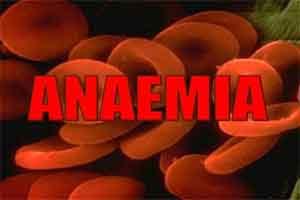- Home
- Editorial
- News
- Practice Guidelines
- Anesthesiology Guidelines
- Cancer Guidelines
- Cardiac Sciences Guidelines
- Critical Care Guidelines
- Dentistry Guidelines
- Dermatology Guidelines
- Diabetes and Endo Guidelines
- Diagnostics Guidelines
- ENT Guidelines
- Featured Practice Guidelines
- Gastroenterology Guidelines
- Geriatrics Guidelines
- Medicine Guidelines
- Nephrology Guidelines
- Neurosciences Guidelines
- Obs and Gynae Guidelines
- Ophthalmology Guidelines
- Orthopaedics Guidelines
- Paediatrics Guidelines
- Psychiatry Guidelines
- Pulmonology Guidelines
- Radiology Guidelines
- Surgery Guidelines
- Urology Guidelines
Nearly Half Of Women Of Reproductive Age In India Anaemic : Study

Kolkata : As many as 48.1 per cent of women of reproductive age in India have anaemia, which is only slightly less than the prevalence percentages in West African nations of Guinea and Nigeria, says the Global Nutrition Report 2016.
In the countries ranked from lowest to highest in prevalence of anaemia in women of reproductive age, India figures at 170 while Senegal at 185 tops with 57.5 per cent. Right after India is Guinea with 48.4 per cent followed by Nigeria at 48.5 per cent and other African nations.
Pakistan (51.1 per cent) and Uzbekistan (51.7 per cent) are the other Asian nations besides India with high prevalence percentages.
Neighbours Bangladesh (43.5 per cent) and Bhutan (43.7 per cent) are slightly better off. The US has the lowest prevalence with 11.9 per cent.
The Global Nutrition Report is an annual assessment of countries’ progress in meeting global nutrition targets established by the World Health Assembly (WHA) and commitments made at the Nutrition for Growth Summit in 2013.
The report indicates India is off course to meet the anaemia reduction target of the WHA to which it is a signatory.
The study notes: “Anaemia is declining so slowly that at current rates we will reach the global target closer to 2130 than 2030.”
Global nutrition targets for 2025 envisages cutting down anaemia in women of reproductive age by 50 per cent.

Disclaimer: This site is primarily intended for healthcare professionals. Any content/information on this website does not replace the advice of medical and/or health professionals and should not be construed as medical/diagnostic advice/endorsement or prescription. Use of this site is subject to our terms of use, privacy policy, advertisement policy. © 2020 Minerva Medical Treatment Pvt Ltd